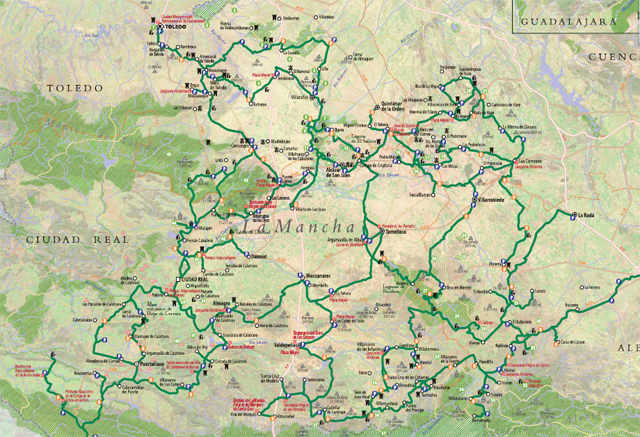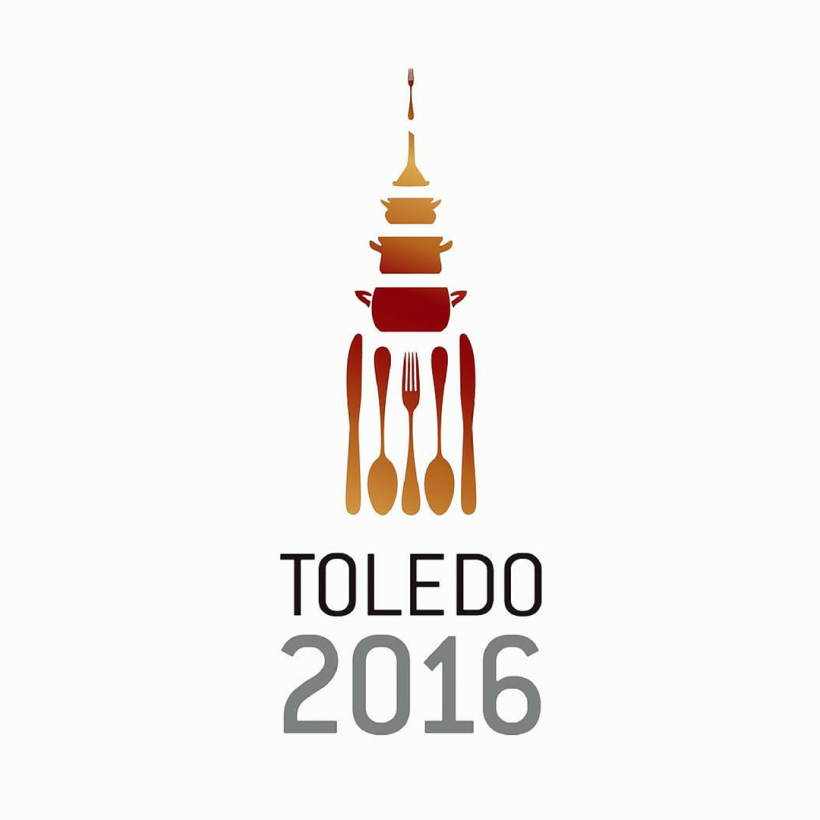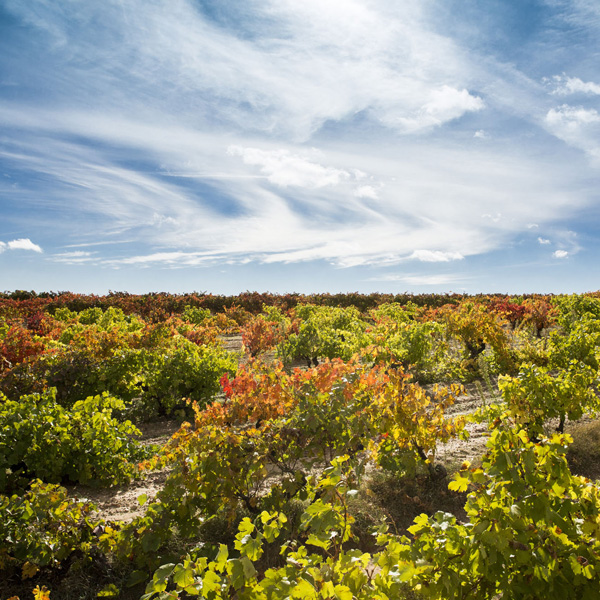This website uses cookies so that we can provide you with the best user experience possible. Cookie information is stored in your browser and performs functions such as recognising you when you return to our website and helping our team to understand which sections of the website you find most interesting and useful.
Route of Don Quixote
10 points of interest on the Route of Don Quixote
- From Toledo to San Clemente and El Toboso Belmonte
- San Clemente Villanueva de los Infantes through Ruidera
- Villanueva de los Infantes and Almagro Calatrava la Nueva.
- Alcudia Valley to Campo de Calatrava through Ruidera
- From Albacete to Alcaraz and Bienservida
- De La Roda to Los Campos de Montiel
- Campo de Criptana to Tomelloso.
- Almagro Ciudad Real to Toledo and Consuegra
- Illescas and Esquivias to Carranque
- De La Hoz del Rio Dulce to Siguenza and Atienza

Castilla-La Mancha is the land of Don Quixote and Sancho Panza; a place of fields and villages, wine and cheese, people of customs and traditions as well as mystical legends.
La Mancha is the place to re live the adventures of the well-known masterpiece of Spanish literature which tells the tale of the ingenious Hidalgo and his faithful squire. The European Council has recognized the name of Ruta del Quijote and given it the award for European Cultural Route.
The Don Quixote route consists of 2,500 kilometers covering the main natural and cultural spaces of Castilla-La Mancha. It is composed of a network of historic paths, actual creeks, trails, river banks… and is divided into ten sections spanning 148 municipalities of the five-Mancha Castilian provinces, which include 2,000 items of cultural interest and a score of areas of natural attraction.
10 points of interest on the Route of Don Quixote
- From Toledo to San Clemente and El Toboso Belmonte
- San Clemente Villanueva de los Infantes through Ruidera
- Villanueva de los Infantes and Almagro Calatrava la Nueva.
- Alcudia Valley to Campo de Calatrava through Ruidera
- From Albacete to Alcaraz and Bienservida
- De La Roda to Los Campos de Montiel
- Campo de Criptana to Tomelloso.
- Almagro Ciudad Real to Toledo and Consuegra
- Illescas and Esquivias to Carranque
- De La Hoz del Rio Dulce to Siguenza and Atienza
Don Quixote’s Route begins in Toledo, the imperial city, and ends after ten days in the Hoz del Rio Dulce towards Siguenza and Atienza. It is almost impossible to browse Mancha fields without feeling the spirit of Don Quixote, especially when you visit Campo the criptana and find the ten mills lining the hill. Do you remember the battle against the giants? Three of the mills (Burlet, Infanto and Sardinero) retain the original mechanisms.
Another point of interest on the route is Tembleque. This village has a central square surrounded by granite columns and wooden structures. And we can’t forget El Toboso, Dulcinea’s home of the woman who inspired the character of Cervantes.
Argamasilla de Alba is the village Cervantes did not want to remember (for the bitter memory of having been in prison), the main square of Almagro or Valdepeñas wineries are typical examples of places in La Mancha.
The route of Don Quixote also explores the culture and ancestral customs. The song of Mayos in spring or pilgrimages in the field are examples of these traditions. The theater of the Golden Age can still be seen in the Corral de Comedias in Almagro and you can buy handicrafts that are still prepared as they were in the time of Cervantes and include manchego cloth (which is made in Albacete), pottery or cutlery.
Vintage traditions and the transformation of grapes into wine, saffron harvesting, processing oil or cheese are still activities that continue with little variation to how they performed in the seventeenth century.
On the other hand, enjoy Manchega’s cuisine with its simplicity and great flavor with names like atascaburras, duelos y quebrantos, migas, pisto, tiznao, borrachuelos… A kitchen that has changed very little since the Golden Age, still robust and hospitable in character.
The spirit of Don Quixote is present in each of the routes where travelers can discover the same landscapes as those from the pen of Cervantes. A beautiful and natural environment, rich gastronomy, diverse wildlife and people willing to share their tales with interested visitors.
Discover More

Toledo, Spanish Capital of Gastronomy 2016
In 2016, Toledo is the Spanish Capital of Gastronomy, thanks to “the creative combination of…

The oldest winery in the world
The oldest winery in the world can be located in the country of Armenia. According…

Harvest Party in Ribera del Duero
The end of summer and the beginning of autumn is celebrated in Ribera de Duero…

